Hail Hydra! Josh Pearce and Arley Sorg Discuss Godzilla: King of the Monsters
Godzilla: King of the Monsters has a lot of things in it that will please Godzilla fans, and plenty that will piss them off. It is a sequel to 2014’s Godzilla, which was directed by Gareth Edwards, and picks up shortly after that movie’s destruction of San Francisco and Godzilla’s subsequent disappearance. Mark Russell (Kyle Chandler), who lost his son in the attack, wants Godzilla and all other “Titans” dead, but his ex-wife Dr. Emma Russell (Vera Farmiga) and their daughter Madison (Millie Bobby Brown) are working toward a way to communicate with the Titans instead, believing that not all Titans are the enemies of humankind.
Enter standard bad guy Alan Jonah (Charles Dance), who kidnaps Emma and Madison, intending to use various discovered dormant Titans (including classic favorites Mothra and Rodan) for eco-terrorism. The plot escalates when Jonah unleashes “Monster Zero” AKA King Ghidorah, a three-headed dragon invulnerable to nearly everything except Godzilla’s attacks. It is now up to Mark Russell to rescue his family, find Godzilla, and entice him to save all of humanity from this new threat.
The weakness of this movie was the humans and the strengths were the monsters, and there were not enough monster moments. Granted, this is not unprecedented — 2014’s Godzilla has the titular lizard appear for roughly eight minutes, and 1965’s Invasion of Astro-Monster (AKA Monster Zero) has him for just a little longer than this. Interesting choices in cinematography, similar to the 2014 movie, such as showing monsters framed behind people or on TV, don’t staunch the craving for more monster air-time.
Fans of Godzilla may be distracted by nitpicking errors in the canon, but will also be rewarded with Easter Eggs and inside references. Those less familiar with the body of Godzilla’s work will likely be disappointed by the trite, misogynistic, and overly human-focused storyline. Especially if you came expecting an awesome monster brawl. If you can manage to ignore the humans, however you feel about the preview is how you’ll probably feel about the movie. Look at the packaging carefully. You know what you’re getting yourself into.
Arley: So — I grew up on Godzilla. To get ready for this one, I watched 18 Godzilla movies curated by my friend and Super Fan Jason Varney (he has the Godzilla blanket to prove it). We started in January 2019 with 1964’s King Ghidora, the Three-Headed Monster, which featured Mothra, Rodan, Godzilla, and that damn dragon. Arguably, it was the first version of this movie.
Josh: Okay well I didn’t do any of that. (Both laughing.) But what did you think? First impressions.
Arley: I had fun. Okay, I mean, I enjoyed it for the most part. The monster scenes, anyways. I think movies like this are all about the expectation going in. If you paid attention to the previews and saw the previous movie, then you should have a fairly good idea of what to expect. My basic first impression is that it meets the expectations of what was set up. If you expect something else, then you’re coming into it with the wrong sort of mood or attitude, and that’s sort of your bad to a degree. You don’t go to a Fast and Furious movie expecting The Shape of Water; or even Smokey and the Bandit, really.
Josh: I was expecting more monsters. But there sure were a lot of humans. And I hated all the humans. Almost all the humans. Although the previous movie was pretty much the same, more humans than monsters; I liked those humans way more than in this one. This Mark Russell dude sucks.
Arley: The monsters they did have were cool, though! Loved the look of them, and the scale established in the opening shots. Hard agree on Mark. Not only was his acting bad, but his narrative sucks. It’s super regressive, very ’90s action white-male-savior (yes, that’s one word). Only he can make decisions. For example, in the scene where the hangar bay was stuck, only he was able to save the day and open the hangar doors, not any of the entire group of trained military staff around him, despite having to move from the cockpit and pass all these people to do it, demonstrating the uselessness of everyone except him.
Josh: There were multiple scenes where he overrides the experts’ opinions on a military and scientific level even though he’s not qualified for any of it.
Arley: I thought Vera Farmiga and Millie Bobby Brown did all right. Farmiga was convincing, and Brown had a few solid moments. I think they were given shitty roles, but as actors they did their jobs.
Josh: Bradley Whitford, as the comic relief, of course gets all the best lines, but he even delivered weak or clichéd lines well. I’m a little biased, though, because I love Bradley Whitford.
There’s an essential difference in the American versus Japanese storytelling of Godzilla films: Americans make it an individualistic white-hero narrative whereas the Japanese films tend to feature collaborative and cooperative ways to stop (or just survive) monsters from destroying their cities. In the Japanese films, there’s always a scientist that needs to be consulted, perhaps an individual in the military; protagonists are often reporters or civilians; and they all come together to face the problem. Experts are usually trusted and their opinions are given due consideration (even when those opinions are pseudoscience). Moreover, in several Godzilla movies, there are strong female central characters and protagonists. In this day and age, in a US film, it’s disappointing to see female characters treated far worse than say 1964’s Mothra vs. Godzilla, where clever female reporter Junko Nakanishi (Yuriko Hoshi) makes important discoveries as well as plot decisions, despite her male boss trying to hold her back.
But whoever’s telling the story, it’s always going to be a questionable premise, given its rubber-monster-suit origins and lack of scientific rigor. In the early days of Godzilla, within the framework of that era’s aesthetics and scientific understanding, perhaps audiences found the SFnal idea of Godzilla fascinating and terrifying; just as American audiences probably felt about 1933’s King Kong and 1954’s Them! Today, looking back at the rubber suits and out-there ideas, these movies are more about fun. And the fun goes out of the room the moment someone says, but wait, is a creature that size even possible? We start out with a big ask: a strong suspension of disbelief. Godzilla is in his own special world where the laws of physics behave a bit differently than ours. So, when they show spontaneous flora regrowth overtaking monster-destroyed land, it’s perhaps excusable to insist that radiation makes things grow. Then again, Godzilla was originally a metaphoric cautionary tale against nuclear technology. Metaphors don’t require a one-to-one corollary with reality. Godzilla: King of the Monsters‘s mistake is taking it all at face value and dolloping the idea of atomic weapons as the cure for pollution on top. Every Godzilla movie has a message, even in the few where it’s a line or two in passing, and it’s usually an environmental message. This one is confused.
Worse, perhaps, it falls into the Michael Bay effect. Explosions. Who needs a solid plot when you have explosions? Better, add in lots of deusaurus ex machina moments. The first time it happens is excusable — you get one highly convenient escape per movie — but it kept happening, until the escapes venture into territory far beyond believable. Did the radiation make them X-Men too? Is that how the stars are narrowly escaping death and maiming (while all the extras get killed)?
Josh: They’re throwing a lot of shit at the wall — hollow earth, Atlantean ancient civilization, kaiju — and most of it doesn’t stick.
Arley: It was kind of exciting for me to see these things, especially with the prior movies fairly fresh in my mind. Most of those ideas have their basis in earlier Godzilla movies. Even monster fight moments harken to specific old school scenes. A few great tweaks to classic fights, actually. I was smirking a lot! I think this is the same as how you reacted to the Marvel movies — I was indoctrinated by watching Godzilla movies so I just roll with it.
Josh: Meh. I haven’t seen a ton of other Godzilla movies, so I end up comparing this to other giant monster movies. Not necessarily other Godzilla movies. I didn’t see Shin Godzilla but I hear it’s pretty good.
Arley: I loved it. It’s so good. It’s a great example of the Japanese narrative versus the American narrative. And a beautiful argument against bureaucracy, I think.
Josh: I did compare this to Pacific Rim which I enjoyed the shit out of. And then I watched the second one, Uprising, and came out thinking it was ten times more fun than this Godzilla.
Arley: Pacific Rim goes in with the goal of making a fun movie. Not to mention, they want to play with the genre, and make a few noticeable tweaks and improvements. King of the Monsters wants to make a Godzilla movie that will change your life, but they make it too dark and too serious. “We’re fucking Americans. Our Godzilla is bigger than yours.”
Josh: Kind of like the DC versus Marvel feel — one is super gritty and grim, the other is just having fun.
Arley: In Japanese Godzilla movies there is at least one moment with a dude in a monster suit. I mean, obviously so. You have to embrace your childlike nature to enjoy it. You have to just fall into that world and not care too much.
Josh: To give them credit, they did a little tribute to the original Godzilla actor at the end even if they didn’t really follow the spirit of it all. The filmmakers took all the deep dark allegory of Godzilla and none of the counterbalancing levity, campiness, or self-awareness. They’re taking only one dark facet of the property instead of the entire thing.
Arley: Now that we go down that rabbithole, Godzilla is a fundamentally optimistic story of “how do we rebuild after disaster?” When an atomic bomb lands on our city, do we all give up and die or do we rebuild our lives? Godzilla films typically end on that uplifting note, even with an uplifting score, but the American iterations don’t end that way.
Josh: At the end of this one, all the redemption and rebuilding happens during the ending credits scenes, with an afterthought montage of newspaper headlines — that no one is going to pay attention to — about coral reefs and greenery and fish populations. The cast is standing in the nuclear wreckage of Boston. By the way, every character has cancer now, that’s just unavoidable.
Arley: Even though Boston got wrecked, I mean, a little bit I guess, there wasn’t the usual large-scale city destruction scene that’s standard in most Godzilla movies — those set in or near cities, anyways. Often they would have painstakingly built sets and have a monster wade through them. Sidenote: Boston gets evacuated but the Mexican village does not. On screen, we get to see all these brown people get wiped out. Racist!
How this movie shits on woman, a multiple part series by Arley Sorg. Part one:
Arley: The female lead —
Josh: The movie presents her as crazy irrational.
Arley: Yes, thank you. I’m so glad we don’t have to be in opposition about this. She’s ten times smarter than everyone else, invents shit, and then becomes meltdown batshit crazy. Like, she didn’t know what was going to happen or what a terrorist organization was going to do. Countered by hero white dude, the only rational person. And it pits the women against each other, setting it up so that the only other female scientist, Dr. Chen (Zhang Ziyi), is likable because she says, “This bitch cray.” None of the women in this movie make any decisions. Dr. Russell looks like she’s making decisions but she’s really just following the terrorist’s lead. The military leader is also a woman, but she has all of her decisions second-guessed and countermanded by the men in the room. Doing whatever Mark Russell wants means sacrificing so many of her soldiers to save this one woman. Plus OMFG “dude saving woman” trope. Even Mothra, rendered as a female (which is usual for Godzilla), and she’s only there to help revive Godzilla and then get killed.
Josh: Now that we’re done hating on the humans, let’s talk about the monsters. First of all, I think Godzilla looks kind of goofy in these movies. Big shoulders, big thighs, big belly, but he makes more sense if I consider him to be an upright stegosaurus rather than a bipedal t-rex-like creature.
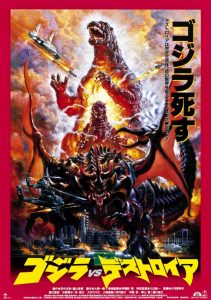
Arley: He’s been working out. It’s the steroids. I think he’s supposed to be based on a komodo dragon, or some other kind of monitor lizard. (I’m sure it’s online somewhere.) I was on the fence with him but I was really into Ghidorah, and Mothra was stunning. Rodan was just okay. They gave both Ghidorah and Mothra a bit more personality, which was really cool, but didn’t go overboard with anthropomorphizing, which happens all the way up to goofiness in the old movies. And they had these small, great tweaks to things, like the way Mothra uses her ability. Every monster scene in this movie is a call back to a previous Godzilla movie, which is fun for fans. Where they find Titans, different phases of Godzilla, weapons mentioned and the way they are deployed. Even the way they help Godzilla and his problem afterwards comes from 1995’s Godzilla vs. Destoroyah, a film with awesome looking moments, which sets up room for awesome looking moments in this one. So. Many. Call backs!
Josh: I had a problem of not being able to see a lot of the monster fights because they were in the rain or in the dark or both. And then I would be blinded by bright lights. However, the dimness did lend itself to some cool reveal shots. The creature effects were generally pretty good, but I also think that rain covers a multitude of CGI sins so they could get away with a lot more.
Arley: Yeah. But still, there were some absolutely amazing visuals, some great, brief moments. Jason was upset that they changed some of the monster calls.
Josh: That’s pretty nerdy.
Arley: It is, but he’s the Super Godzilla Fan. I loved hearing the classic Godzilla music when he rose up.
Josh: Oh yeah, the weird religious shit.
Arley: What shit? They sometimes have shamans or the like in Godzilla movies.
Josh: Ghidorah directly faces a cross on the island, referencing the Beast of Revelation.
Arley: Oh. Hmm.
Josh: Then there’s Godzilla’s death and resurrection, followed by mixed messages about dragons. (According to this movie, in Eastern mythology they are good, in Western they are bad? Godzilla is a good dragon because he’s from Earth? Ghidorah is a bad dragon cause he’s from space?) Just more confusion in an already confusing plot.
Arley: Since Jason was kind enough to share his collection with me, I invited him to give a brief summary of his opinion. This is a guy who owns every movie and can identify actors in bit parts and so on.
Jason: Though they got the monsters right, no one can figure out what to do with them when they’re on screen. Some beautifully shot scenes, but the pacing is all over the place.
Arley: Thanks, Jason!
It’s important to consider that Godzilla movies encompass a genre of their own – there are so many of them that this latest one inevitably invites comparisons to earlier Godzilla films, with hardcore fans entrenching atop the hills they want to die on. But, similar to the Marvel superhero movies, a Godzilla film is foremost a film, and if you’re making it only for the people who have read the comic books/source material or who have seen tons of the previous Godzilla movies, and if you end up alienating all other audiences, then you have kind of failed as a filmmaker.
Directed by: Michael Dougherty
Written by: Michael Dougherty, Zach Shields & Max Borenstein
Starring: Kyle Chandler, Vera Farmiga, Millie Bobby Brown, Ken Watanabe, Ziyi Zhang, Bradley Whitford, Sally Hawkins, Charles Dance, Thomas Middleditch, Aisha Hinds, O’Shea Jackson Jr., David Strathairn, Anthony Ramos, Elizabeth Faith Ludlow, Jonathan Howard & CCH Pounder

ARLEY SORG, Associate Editor, grew up in England, Hawaii, and Colorado. He studied Asian Religions at Pitzer College. He lives in Oakland, and usually writes in local coffee shops. A 2014 Odyssey Writing Workshop graduate, he is soldering together a novel, has thrown a few short stories into orbit, and hopes to launch more.
JOSH PEARCE, Assistant Editor, started working at Locus in 2016. He studied creative writing at SFSU and has sold short stories and poems to a variety of speculative fiction magazines. Born and raised in the Bay Area, he currently lives in the East Bay with his wife and son and spends way too much time on Twitter: @fictionaljosh. One time, Ken Jennings signed his chest.
 While you are here, please take a moment to support Locus with a one-time or recurring donation. We rely on reader donations to keep the magazine and site going, and would like to keep the site paywall free, but WE NEED YOUR FINANCIAL SUPPORT to continue quality coverage of the science fiction and fantasy field.
While you are here, please take a moment to support Locus with a one-time or recurring donation. We rely on reader donations to keep the magazine and site going, and would like to keep the site paywall free, but WE NEED YOUR FINANCIAL SUPPORT to continue quality coverage of the science fiction and fantasy field.
©Locus Magazine. Copyrighted material may not be republished without permission of LSFF.


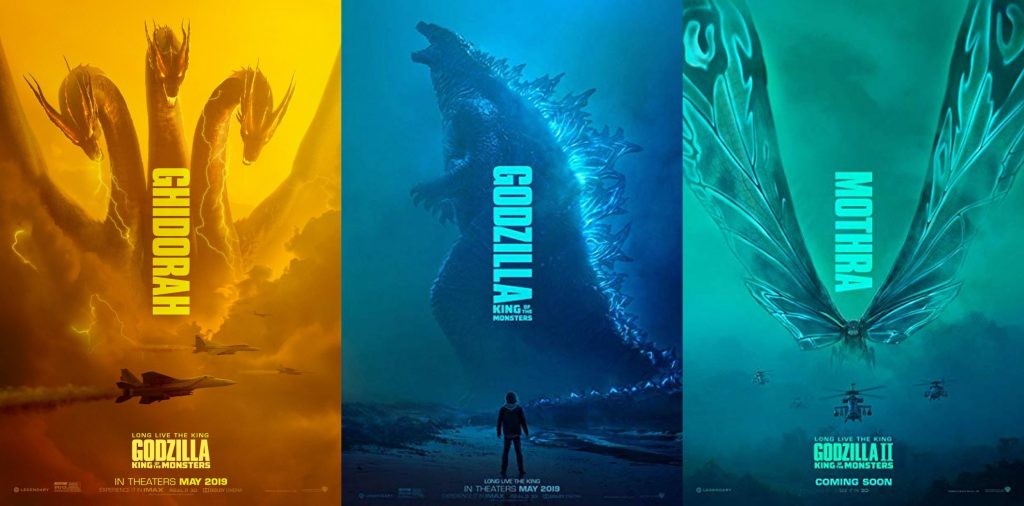


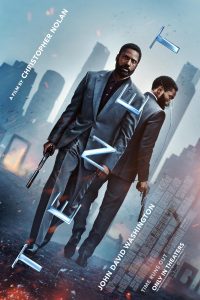
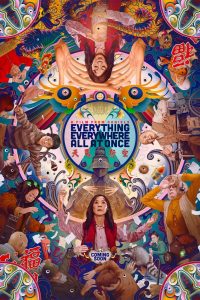
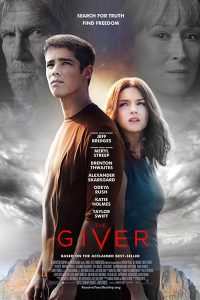

The only good Giant Monster … look-out-its-loose movie … is the 1933 King Kong.
And that’s all.
I do like the 1954 Gojira because that Japanese film is a serious allegory about WWII.
Well, I did like the goofy Korean monster film The Host.
That’s about it , except for being entertained by Ray Harryhausen despite very lackluster film stories.